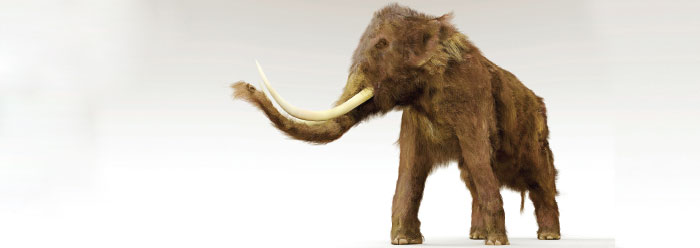According to Dr. Adrian Lister, a British paleobiologist, DNA cannot survive in dinosaur bones because dinosaurs lived far too long ago for their DNA, which is inherently unstable, to survive to the present.
DNA is a fragile molecule, and rapidly decays after the death of an organism. Early reports of DNA from dinosaur bones, tens of millions of years old [sic], proved unfounded, and at present, we do not have any confirmed DNA from fossils older than a million years, with the vast majority less than 50,000 years old. This restricts serious study [of ancient DNA] to remains from the Ice Age, but still encompasses many extinct species. The enemies of DNA preservation are warmth, moisture and oxygen, so remains locked in arctic permafrost have proved to be particularly valuable sources of ancient DNA.1
Dr. Lister is no stranger to Ice Age remains, having a particular expertise in Ice Age elephants, what we call wooly mammoths and mastodons. Lister’s book on these creatures identifies him as “a Merit Researcher in the Earth Sciences Department at the Natural History Museum in London,” specializing in Ice Age mammoth and mastodon fossils, as well as “saber-toothed cat, giant sloth, cave bear and dire wolf.” So, Dr. Lister knows how difficult it is to study DNA fragments from the Ice Age.1 That professional experience convinced him that DNA cannot last for millions of years, much less for 50 or 60 million years—the reachback time that evolutionists assume for the “age of dinosaurs.”1,2
Creationists would agree with Dr. Lister in assuming that dinosaur DNA biomolecules cannot survive, biochemically speaking, for scores of millions of years.2,3 However, Lister’s overarching mistake is his evolutionist assumption that dinosaurs lived “millions of years” ago.4 Consequently, his theory clashes with the embarrassing discovery of biochemical evidence inside dinosaur bone cells that is not readily explainable as anything but dinosaur DNA.
Dinosaur soft tissue fossil experts observed that microstructures that look just like bone cells called osteocytes might contain original DNA….Now, some of the same researchers are revealing the results of further dinosaur cell exploration [including] the vertebrate-specific proteins actin and PHEX, as well as DNA in the dinosaur cells.2
But how can someone identify actual DNA inside Tyrannosaurus rex bone?
[Dr. Mary Schweitzer et al.] applied two different DNA-sensitive stains to the osteocyte structures. The stains showed faint but visible DNA in a tight central location inside the long-dead cell remnant….[This finding was corroborated by applying] an antibody that only binds to a DNA-packing protein called histone H4. It, too, bound to its target in the same central region within the dinosaur bone cell as the DNA showed. The stains and antibody did not bind other parts of the cell, nor the mineral matrix that originally surrounded the fossil.2
There you have it, for those with eyes to see: Smoke coming from something that looks suspiciously like a gun!
As Dr. Lister admits, biochemical entropy (i.e., degradation, decay) realities prevent DNA from lasting millions of years.1,3 Therefore, if recognizable DNA fragments can be discovered in dinosaur bones—and can survive political suppression4—it’s “game over” for the evolutionist paleontology “dating game.”
References
- Lister, A. 2014. Mammoth and Mastodons of the Ice Age. Buffalo, NY: Firefly Books, 86 and back cover.
- Thomas, B. Did Scientists Find T. Rex DNA? Creation Science Update. Posted on ICR.org November 7, 2012, accessed April 7, 2017; Thomas, B. 2013. DNA in Dinosaur Bones? Acts & Facts. 42 (1): 15, citing Schweitzer, M. H. et al. 2013. Molecular analyses of dinosaur osteocytes support the presence of endogenous molecules. Bone. 52 (1): 414-423.
- Allentoft, M. E. et al. 2012. The half-life of DNA in bone: measuring decay kinetics in 158 dated fossils. Proceedings of the Royal Society B. 279 (1748): 4724-4733.
- 1 Timothy 6:20. See also Johnson, J. J. S., J. Tomkins, and B. Thomas. 2009. Dinosaur DNA Research: Is the tale wagging the evidence? Acts & Facts. 38 (10): 4-6, citing Woodward, S. R., N. J. Weyand, and M. Bunnell. 1994. DNA sequence from Cretaceous period bone fragments. Science. 266 (5188): 1229-1232.
* Dr. Johnson is Associate Professor of Apologetics and Chief Academic Officer at the Institute for Creation Research.

















